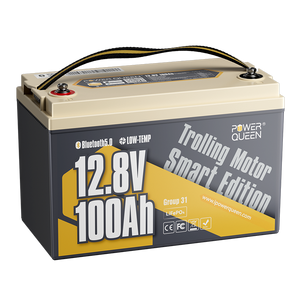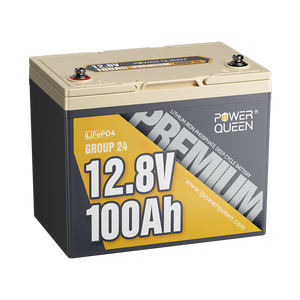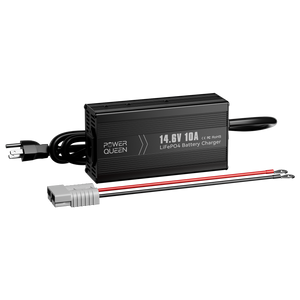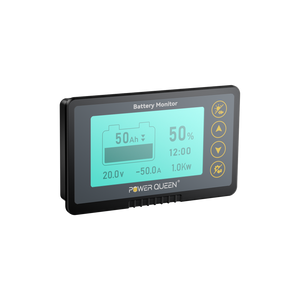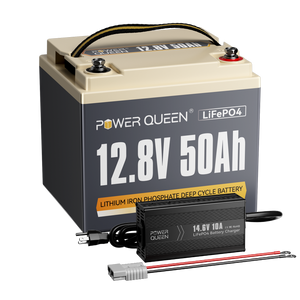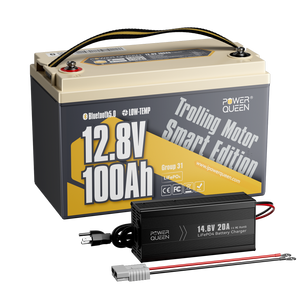How To Test Golf Cart Batteries: A Comprehensive Guide
For golf carts to ride smoothly on the course, batteries are necessary. Testing these batteries on a regular basis is essential to preserving peak performance. Golf cart battery testing guarantees longevity and dependability in addition to assisting in the detection of possible problems. However, how can golf cart batteries be tested? We'll show you how to test golf cart batteries in this in-depth guide so you can maintain your vehicle in optimal condition.
Table of Content
- Part 1. Understanding the Importance of Battery Testing
- Part 2. Types of Golf Cart Batteries
- 2.1 Lead-Acid Batteries
- 2.2 Lithium-Ion Batteries
- 2.3 Why Lithium Golf Cart Batteries A Better Choice
- Part 3. 5 Effective Methods to Test Golf Cart Batteries
- 3.1 Visual Inspection
- 3.2 Voltage Testing
- 3.3 Load Testing
- 3.4 Specific Gravity Testing (for Lead-Acid Batteries)
- 3.5 Interpreting Test Results
- Part 4. Conclusion
Part 1. Understanding the Importance of Battery Testing
Your golf cart's batteries are its lifeblood, keeping it running for the duration of the round. For a number of reasons, routine testing is essential. First of all, it enables you to spot any failing or weak batteries before they lead to a malfunction when you're out on the course. Second, testing makes it possible to evaluate the battery bank's general performance and health, allowing you to replace or perform any necessary maintenance.



Part 2. Types of Golf Cart Batteries
Understanding the many kinds of golf cart batteries that are available is crucial before beginning the testing procedure. Golf cart batteries are most frequently made of lead-acid and lithium-ion batteries. Before beginning any testing, it is crucial to identify the type of battery you have because each has different testing specifications and techniques.
Electric golf carts are typically powered by two types of golf cart batteries: lithium-ion and lead-acid batteries.
2.1 Lead-Acid Batteries
2.1.1 Flooded Lead-Acid Batteries: These lead-acid batteries are the most widely used kind in golf carts. Known for their affordability and dependability, they need routine care, which includes monitoring and replenishing electrolyte levels.
2.1.2 Sealed Lead-Acid Batteries (AGM or Gel): Regular watering is not necessary for these batteries, which require no maintenance. Since they are sealed, they are impervious to spills and appropriate for settings with restricted access for maintenance. Two popular sealed lead-acid battery types seen in golf carts are AGM (Absorbent Glass Mat) and Gel batteries.
2.2 Lithium-Ion Batteries
Because of its superior energy density, lightweight design, and longer lifespan than lead-acid batteries, lithium-ion golf cart batteries are becoming more and more popular in the golf cart business. Their tolerance for deep discharges is strong, and they require little upkeep. Although they are frequently more expensive initially, they have benefits in terms of longevity and performance.
2.3 Why Lithium Golf Cart Batteries A Better Choice
Due to a number of strong benefits over conventional lead-acid batteries, lithium golf cart batteries have become the favored option for many golf cart users. Lithium golf cart batteries are seen to be a superior option for the following reasons:
Longer Lifespan: Generally speaking, lithium-ion batteries last longer than lead-acid batteries. They can survive many times longer, frequently withstanding more cycles of charging before exhibiting a discernible drop in performance. The frequency of battery replacements and related maintenance expenses are decreased due to their lifetime.

Lightweight and Compact: Compared to lead-acid batteries, lithium-ion batteries are substantially lighter and smaller. Their lighter weight makes handling and installation simpler and improves energy efficiency. Increased freight capacity and improved overall cart performance may result from this.
High Energy Density: Because of their increased energy density, lithium batteries can hold more energy in a given weight or volume. This results in more power and a greater driving range, both of which are advantageous for golf carts and other electric vehicles.
Faster Recharge Times: Generally speaking, lithium batteries charge faster than lead-acid batteries. In a golf course environment, where rapid charging could be required to maintain fleet operations throughout the day, this rapid recharge capability enables faster turnaround times between usage. Power Queen lithium golf cart batteries, for instance, have a maximum charge time of around one hour and support 1C charging.
Maintenance-Free Operation: Lithium-ion batteries require almost no maintenance, in contrast to lead-acid batteries. They don't need any special maintenance procedures, equalization charging, or frequent watering. As a result, the overall operational burden and maintenance expenses related to conventional lead-acid battery care are decreased.
Deep Discharge Tolerance: Unlike lead-acid batteries, lithium-ion batteries can withstand higher discharges without sacrificing their longevity. This feature gives consumers a more steady and dependable power source, particularly in challenging scenarios where deep and repeated discharges are typical.
Environmental Benefits: In general, lithium-ion batteries are thought to be more eco-friendly than lead-acid batteries. They are free of harmful substances like lead, and their manufacture and disposal frequently have less of an adverse effect on the environment.
Although lithium-ion batteries have many benefits, it's vital to remember that their initial cost is usually higher than that of conventional lead-acid batteries. Thankfully, Power Queen provides premium Grade-A cell lithium batteries at affordable prices, giving you the chance to take advantage of lithium-ion technology without having to make a large upfront investment. This implies that consumers can benefit from lithium-ion batteries while possibly lowering the upfront costs that are frequently connected to this cutting-edge technology.
Part 3. 5 Effective Methods to Test Golf Cart Batteries
3.1 Visual Inspection
The first step is to visually inspect the batteries. Check the battery casing for leaks, corrosion, or other damage. Make sure that every connection is corrosion-free and secure. Any obvious problems should be fixed before moving on to more testing.
A leaking battery is indicated if you see a liquid or dried white substance. Due to increased pressure, this material is the electrolyte that has leaked out of the battery's protective covering.
Related reading: Do Lithium Batteries Leak? How to Prevent?
3.2 Voltage Testing
Determine the voltage of each battery separately using a multimeter. A fully charged 6-volt battery should register between 6.4 and 6.6 volts. The value should be between 37.5 and 39 volts for 36-volt batteries and between 50 and 52 volts for 48-volt batteries. A weak or failing battery may be indicated by any values that are noticeably below these ranges.
3.3 Load Testing
Applying a controlled discharge to the battery while keeping an eye on its voltage is known as load testing. This aids in determining the battery's total capacity and load-sustaining capability. You can use a load tester made specifically for golf cart batteries, or many auto and golf cart repair shops offer specialist equipment for load testing.
3.4 Specific Gravity Testing (for Lead-Acid Batteries)
Specific gravity testing can reveal important information about the condition of your lead-acid batteries. Determine the battery's electrolyte's specific gravity with a hydrometer. Deviations from the range recommended by the manufacturer may be a sign of battery cell problems.
3.5 Interpreting Test Results
It's critical to appropriately interpret the test results when they are conducted. The voltage and load testing requirements should be regularly met by a healthy battery. A battery may need maintenance or replacement if it displays decreased voltage readings, suffers during load testing, or displays erratic specific gravity values.
Part 4. Conclusion
One of the most important aspects of routine golf cart maintenance is testing the batteries. By using the techniques described in this book, you can make sure that the power supply for your golf cart stays dependable and effective. In addition to extending battery life, routine testing helps to avoid unplanned malfunctions when playing games. Eventually, playing golf will be more pleasurable and trouble-free if your batteries are kept in top condition.




